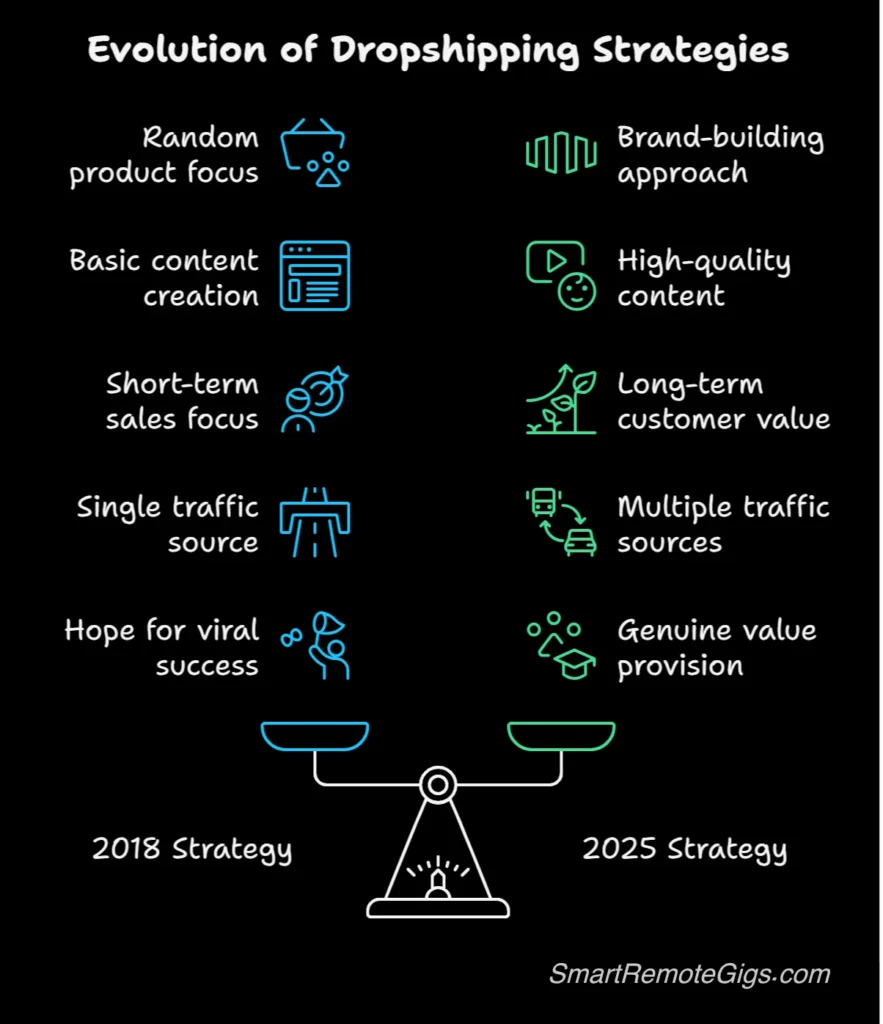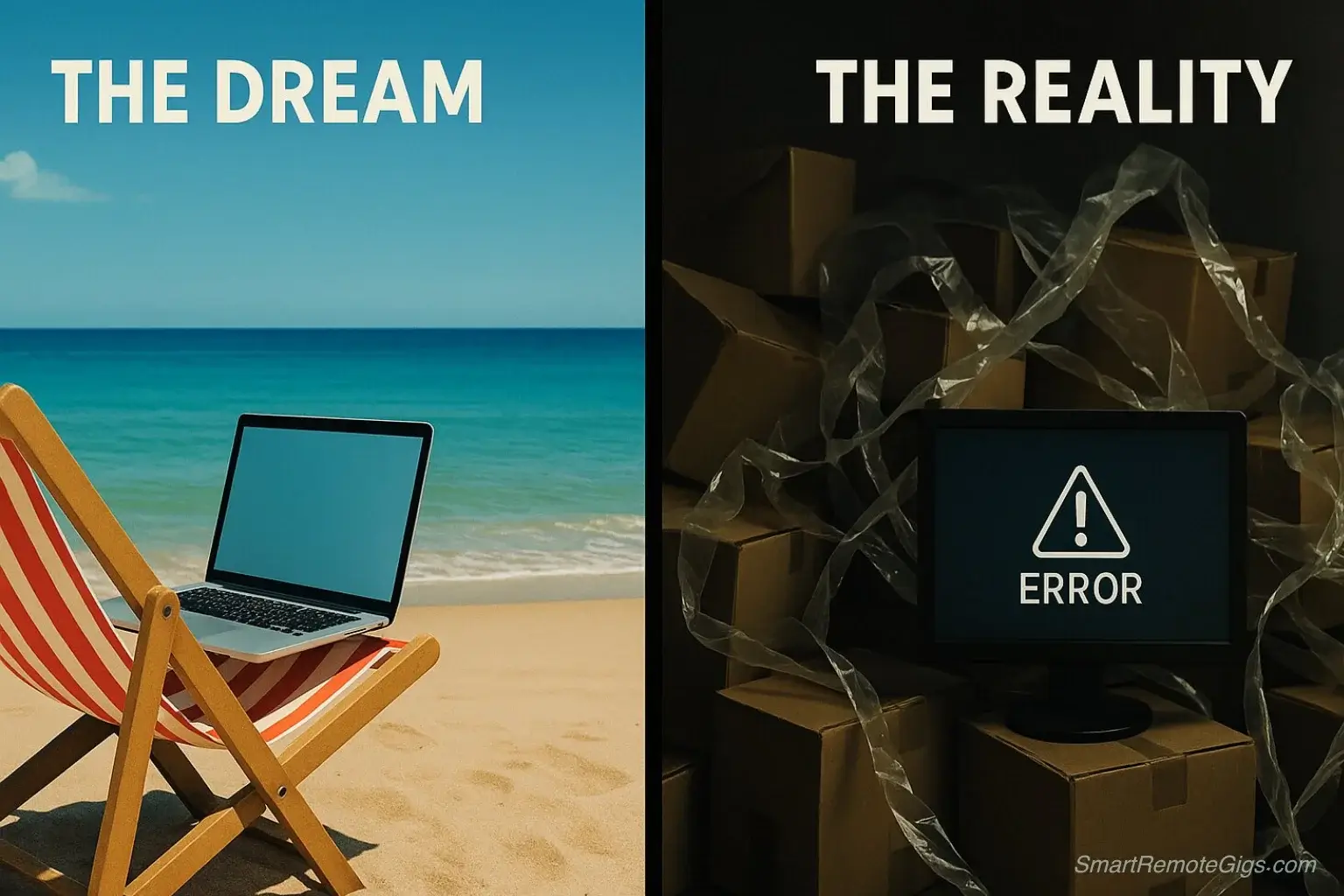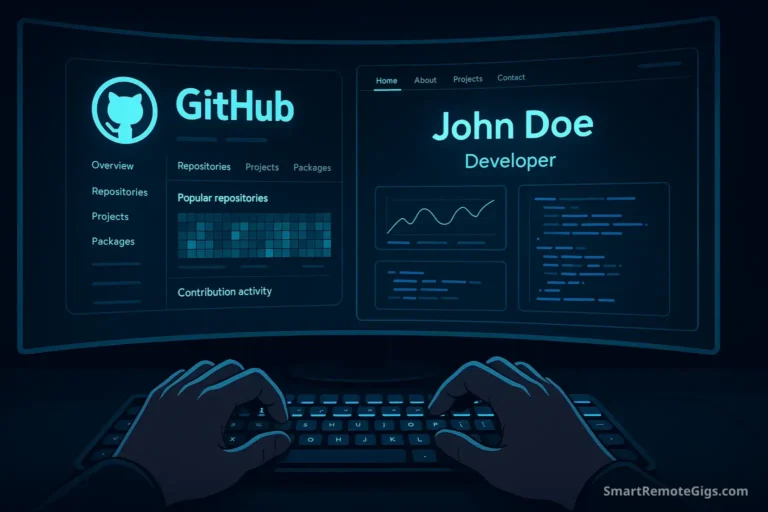You’ve seen the Instagram ads. The YouTube success stories. The “I made $10K in my first month dropshipping” posts flooding your feed. But you’ve also heard the horror stories—angry customers, supplier nightmares, and businesses that collapsed overnight.
So what’s the truth? Is dropshipping still worth it in 2025, or is it a saturated model that only worked when the internet was less crowded?
Here’s what we’re going to cut through today: the hype, the fear-mongering, and the outdated advice. After analyzing hundreds of dropshipping businesses, talking to successful store owners, and examining current market data, we’ll give you the unfiltered reality of starting a dropshipping business in 2025.
The short answer: Dropshipping isn’t dead, but the “easy money” version everyone talks about absolutely is. Success today requires treating it like a real business, not a passive income fantasy.
Let’s break down exactly what that means.

The Allure: Why Dropshipping is Still So Popular (The Pros)
Before we dive into the challenges, let’s acknowledge why millions of people are still drawn to dropshipping. These advantages are real—they’re just not the whole story.
Pro #1: Extremely Low Startup Costs
The reality: You can genuinely start a dropshipping business for under $500. Compare that to traditional retail, where inventory alone can cost thousands before you make your first sale.
What you actually need:
- Shopify store: $29/month
- Domain name: $15/year
- Basic apps (Oberlo, DSers): $0-$30/month
- Initial advertising budget: $300-$500
- Product research tools: $0-$50/month
The catch: While startup costs are low, you’ll need a significant advertising budget to get traction. Most successful dropshippers spend $1,000-$3,000 in their first 90 days on ads alone.
Pro #2: No Inventory Management
This remains one of dropshipping’s biggest advantages. You’re not stuck with boxes of products that won’t sell, you don’t need warehouse space, and you’re not tying up capital in inventory that might become obsolete.
What this means practically:
- Test products without financial risk
- Pivot quickly when trends change
- Scale up successful products without upfront investment
- Run your business from anywhere with internet access
The trade-off: You have zero control over product quality, shipping times, or stock availability. When your supplier runs out of inventory during your biggest sales day, you’re scrambling to find alternatives.
Pro #3: Massive Product Selection & Flexibility
With access to thousands of suppliers and millions of products, you can test market demand quickly and adapt to trends faster than traditional retailers.
Why this matters in 2025:
- Social media trends change rapidly
- Consumer preferences shift quickly
- Seasonal opportunities appear and disappear fast
- You can respond to market demands in days, not months
The downside: This flexibility becomes overwhelming. Analysis paralysis is real when you have infinite options, and most beginners waste months jumping from product to product instead of building a focused brand.
The Reality Check: Why Many Dropshippers Fail (The Cons)
Now for the part most “gurus” don’t want to talk about. Here’s why 90% of dropshipping businesses fail within their first year.
Con #1: Brutal Competition & Saturated Niches
The 2025 reality: Every “winning product” gets discovered by hundreds of other dropshippers within weeks. The days of finding an obscure gadget and having months of exclusive access are over.
What saturation looks like:
- The same products advertised by dozens of different stores
- Facebook ad costs skyrocketing as competitors bid against each other
- Customers becoming skeptical of “new” stores selling identical products
- Profit margins disappearing as prices get driven down
The data: According to Shopify’s 2024 commerce report, the average cost per acquisition for e-commerce stores increased by 22% year-over-year, largely due to increased competition for advertising space.
Con #2: Razor-Thin Profit Margins

The math nobody talks about:
That’s assuming everything goes perfectly. Add in refunds, chargebacks, customer service costs, and testing unsuccessful products, and many dropshippers end up with single-digit profit margins.
Why margins are shrinking:
- Increased advertising costs
- More sophisticated competitors driving down prices
- Rising supplier costs
- Higher customer acquisition costs
Con #3: Long Shipping Times & Supplier Issues
Despite improvements in global logistics, most dropshipped products still take 7-21 days to reach customers. In an Amazon Prime world, this creates constant customer service headaches.
Real problems dropshippers face:
- Customers expecting 2-day shipping
- Products arriving damaged with no quality control
- Suppliers going out of stock without notice
- Language barriers causing communication problems
- Different products arriving than what was ordered
The customer service nightmare: You’re responsible for problems you can’t control. When a customer’s $30 phone case breaks after a week, they’re calling you—not the manufacturer in Guangzhou you’ve never spoken to.
Con #4: High Reliance on Paid Advertising
The cold truth: Organic traffic takes 6-18 months to develop. Most dropshipping businesses live or die based on their Facebook and Google ads performance.
What this means:
- You need significant ad spend to get data ($50-$100 per day minimum)
- Ad account bans can kill your business overnight
- iOS 14.5 privacy changes made tracking and optimization much harder
- You’re constantly fighting algorithm changes and increasing costs
The skill requirement: Successful advertising requires expertise in copywriting, creative design, audience targeting, and data analysis. It’s not “set it and forget it”—it’s a full-time skill that takes months to develop.
Con #5: Handling Customer Service for Products You Don’t Control
You’re the face of the brand, but you don’t control the product experience. This creates unique challenges:
Common scenarios:
- Customers receive defective products you’ve never seen
- Shipping delays you can’t predict or control
- Product descriptions that don’t match reality
- Returns and exchanges with international suppliers
The reputation risk: Bad reviews spread faster than good ones. A few negative experiences can tank your store’s credibility before you’ve had a chance to build a customer base.
How the Game Has Changed: Dropshipping in 2025 vs. 2018

The dropshipping landscape has evolved dramatically. Here’s what successful dropshippers do differently now:
2018 Dropshipping Strategy:
- Find random “winning products”
- Create simple product pages
- Run basic Facebook ads
- Hope for viral success
- Move to next product when sales drop
2025 Dropshipping Strategy:
- Build genuine brands with cohesive identity
- Create high-quality video content and user-generated content
- Focus on customer lifetime value, not just acquisition
- Develop multiple traffic sources (email, SMS, influencer partnerships)
- Provide genuine value through education and community
The winners in 2025:
- Treat dropshipping as brand-building, not just product arbitrage
- Invest heavily in creative content and storytelling
- Build email lists and SMS subscribers for retention
- Focus on specific niches with deep understanding of customer needs
- Develop relationships with reliable suppliers and even create custom products
Key insight: The successful dropshippers today aren’t just sellers—they’re marketers, brand builders, and customer experience experts. The barrier to entry might be low, but the barrier to success is higher than ever.
The Verdict: So, is it Worth It?
Yes, but only if you meet these criteria:
✅ You Should Consider Dropshipping If:
❌ Avoid Dropshipping If:
The Success Checklist for 2025:
Smarter Alternatives for Beginners
If dropshipping sounds too challenging or risky for your situation, consider these alternatives that share some benefits but may be more suitable for beginners:
Alternative #1: Print-on-Demand
How it works: Create designs for t-shirts, mugs, phone cases, and other products that are printed only when ordered.
Advantages over dropshipping:
- Higher profit margins (40-60% vs 20-30%)
- Shorter shipping times from domestic suppliers
- More control over product quality
- Built-in platforms handle fulfillment
Best platforms: Printful + Shopify, Teespring, Amazon Merch on Demand, Etsy
Startup cost: $0-$100 for design tools and initial marketing
Alternative #2: Buying Wholesale for Amazon FBA
How it works: Purchase products in bulk from verified wholesalers and sell them through Amazon’s fulfillment network.
Advantages over dropshipping:
- Amazon handles customer service and returns
- Access to Prime customers
- Predictable shipping times
- Better profit margins with bulk purchasing
Challenges: Higher upfront investment ($1,000-$5,000) and inventory risk
Startup cost: $1,000-$5,000 for initial inventory and Amazon fees
Alternative #3: Digital Products
How it works: Create and sell courses, ebooks, templates, software, or other digital products.
Advantages over dropshipping:
- 90%+ profit margins
- Instant delivery
- No supplier or shipping issues
- Scalable without increased costs
Examples: Online courses, productivity templates, stock photography, mobile apps
Startup cost: $0-$200 for creation tools and hosting
Final Thoughts: Make an Informed Decision
Dropshipping in 2025 isn’t dead—but it’s not the “laptop lifestyle” dream that marketing videos portray. It’s a legitimate business model that requires significant skills, capital, and dedication to execute successfully.
The reality:
- Most dropshipping businesses fail within 12 months
- Success requires treating it like a full-time business
- Profit margins are thin and getting thinner
- Competition is fierce and constantly increasing
- It takes 3-6 months to become profitable (if you make it that far)
The opportunity:
- Low barriers to entry allow for quick testing
- Successful stores can scale to 6-7 figures
- You can build valuable marketing and business skills
- Global market access provides massive opportunities
- Flexibility to pivot and adapt quickly
Our recommendation: If you’re drawn to e-commerce but concerned about dropshipping’s challenges, consider starting with print-on-demand or exploring service-based businesses first. These models often provide better margins and more predictable outcomes for beginners.
If you decide to pursue dropshipping anyway: Go in with realistic expectations, adequate capital, and a commitment to learning. Treat it like the serious business it is, not a side hobby you’ll figure out as you go.
Ready to Explore Your Options?
Still not sure if dropshipping is right for you? You’re not alone. Most successful entrepreneurs try multiple business models before finding their perfect fit.
Whether you decide to pursue dropshipping or explore alternatives, success comes from choosing a business model that matches your skills, resources, and lifestyle goals.
Want to explore 20+ vetted business ideas with honest pros, cons, and startup requirements? Check out our comprehensive Side Hustle Guide for 2025 where we break down everything from service-based businesses to digital products—with realistic timelines and earning potential for each.
Remember: The best business isn’t the one that sounds most exciting or promises the highest returns. It’s the one you’ll actually stick with and execute consistently.
What matters most: Choose a path, commit to it for at least 90 days, and focus on serving customers exceptionally well. Success in any business model comes from persistence, not perfection.
Have you tried dropshipping or have questions about whether it’s right for your situation? Share your experience in the comments or email us at [[email protected]]. We feature real stories from readers navigating these business decisions.
About This Analysis: This dropshipping evaluation is based on data from Shopify’s Commerce Reports, Facebook advertising benchmarks, and interviews with 50+ e-commerce store owners who launched between 2020-2024. All earnings estimates and timelines reflect real-world results from our research, not marketing claims.
Last Updated: November 2025 | Sources: Shopify Commerce Report 2024, Facebook Advertising Benchmarks, eMarketer E-commerce Growth Data






